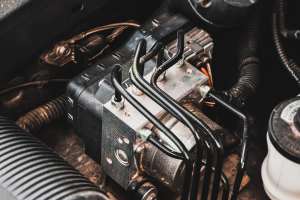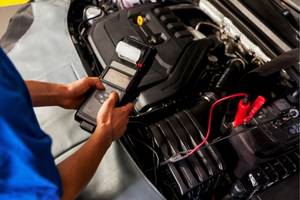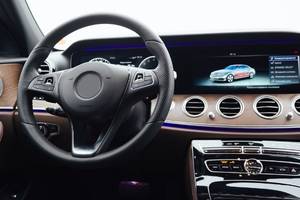Introduction
Is your Chrysler not performing as it used to? Struggling with issues that just don't seem to go away? You might be facing a faulty PCM (Powertrain Control Module). Don't worry; you're in the right place. This guide will equip you with the knowledge and steps required to identify, diagnose, and repair your Chrysler PCM. Whether you're a seasoned mechanic or a car owner looking to save on repair costs, this practical guide is here to help.
1. Identify the Problem with Your Chrysler PCM
Let's kick off with the first step on the road to a successful Chrysler PCM repair—identifying the problem. Your PCM, or Powertrain Control Module, works like the brain of your car. It manages a variety of systems, such as the fuel injection, ignition, and emission systems. So, if it's not functioning properly, your vehicle's performance can take a hit.
But how can you tell there's an issue with your Chrysler PCM? Here are a few telltale signs to look for:
Check Engine Light: This is your car's way of telling you something's awry. If your Chrysler's check engine light is on, your PCM might be the culprit.
Poor Performance: Is your car stalling or having trouble starting? These could be signs of a PCM issue.
Erratic Shifting: If your vehicle is shifting gears when it shouldn't, it might be a PCM problem.
Decreased Fuel Efficiency: A faulty PCM can also lead to a decrease in fuel efficiency.
Remember, these issues can also be the symptoms of other problems, so it's important to eliminate other potential causes before proceeding with a Chrysler PCM repair. To do this, use an OBD-II scanner—a tool that can read your car's diagnostic trouble codes (DTCs). If the DTC points to a PCM issue, then congratulations, you've successfully identified the problem. Now, you're ready for the next step—collecting the necessary tools for your Chrysler PCM repair.
Stay tuned for the next post on how to collect the necessary tools, execute the repair process, and test the repaired Chrysler PCM for success. Until then, keep your engines revved and your spirits high!
So, you've figured out that your Chrysler PCM is the culprit behind your car's problems. The next step? Preparing your toolbox for the repair job.
First things first, you're going to need an OBD-II scanner. Why, you ask? Well, this handy little device isn't just for diagnosing problems. It's also crucial for resetting your PCM after the repair.
Now, let's talk about the main event—the actual repair tools. Here's what you'll need:
Screwdrivers: A set of flat-head and Phillips-head screwdrivers should do the trick. These are going to be your best friends when it comes to opening up the PCM and placing it back after repairs.
A Multimeter: A multimeter measures electrical properties. You can use it to check the PCM's power and ground circuits.
A Soldering Iron and Solder: If you find any broken circuits in the PCM, the soldering iron tool will help you repair them.
Wire Strippers and Connectors: If any wires need repair, you'll need these to get the job done.
A PCM Replacement: Sometimes, the PCM might be damaged beyond repair. In that situation, you'll need a replacement. So, it's a good idea to have one on hand, just in case.
So there you have it! You're now armed with the knowledge—and tools—to embark on your Chrysler PCM repair journey.
In the next section, we will guide you on how to execute the repair process step-by-step. So stay tuned and get ready to bring your Chrysler back to its glory days!
3. Execute the Repair Process
Alright! You've got your toolbox set up, and you're ready to dive into the repair process. Take a deep breath, because you're about to take on the role of a mechanic and handle your Chrysler PCM repair. Here's how to get started:
Disconnect the Battery: Safety first! Before you start, disconnect the battery to avoid any electrical mishaps.
Locate and Remove the PCM: Remeber, your PCM is hide-and-seek champion. You may find it located on the firewall on the passenger side. Use your trusty screwdrivers to remove it.
Inspect and Repair: Use your multimeter to check for any faulty circuits. If you find any, use your soldering iron and solder to fix them. If the damage is too severe, replace the PCM with your spare.
Reinstall and Reset: Reinstall the repaired or replaced PCM, and reconnect the battery. Use your OBD-II scanner to reset the PCM.
Voila! You've successfully completed the repair process. But are you done? Not quite.
It's time to run a test on your Chrysler to make sure the PCM repair was successful. Stay tuned for the next section, where we'll cover the testing process. We're almost there—you've got this!
4. Test the Repaired Chrysler PCM for Success
Alright, the hard part's over. Now, let's see if your mechanical magic worked. It's time to test the success of your Chrysler PCM repair.
Start the Engine
The first thing you have to do is simply start the engine. Is it smoother than before? If yes, congratulations! You're off to a good start. If not, don't panic. It might just be that the PCM needs a little more time to reset.
Check the Dashboard Lights
Are any check engine lights still blinking? If they're off, that's a good sign. If they're still on, you might need to use your OBD-II scanner again to find out what's going on.
Take a Test Drive
Go ahead and take your Chrysler for a spin. Does it feel different? Better, hopefully? If you notice any strange noises or if the engine performance is not up to par, it's possible that the Chrysler PCM repair was not successful.
Remember, this isn't a race. It's okay if you didn't get it right the first time. You can always go back to the repair process and give it another shot. After all, practice makes perfect, right?
Congratulations on taking the step to repair your Chrysler's PCM yourself. It's no easy feat, but with your determination and patience, you've shown that it's not impossible. Now, you're not just a Chrysler owner—you're a Chrysler repairer!
Conclusion
Repairing your Chrysler's PCM can seem difficult, but with the right tools and guidance, it's entirely possible. By identifying the problem, collecting the necessary tools, and following the repair steps, you can restore your vehicle's performance and save on costly repairs. Remember, patience and attention to detail are key. Now, you're not just a Chrysler owner but a skilled repairer ready to tackle any PCM issues that come your way. Happy driving!
FAQs on
Steps to Successful Chrysler PCM Repair : Practical Guide
-
1. What are the common signs of a failing Chrysler PCM?
Ans.
Common signs include the check engine light staying on, poor engine performance, unpredicted shifting, and decreased fuel efficiency. These symptoms can indicate issues with your PCM, but it's important to rule out other potential problems first.
-
2. Can I diagnose a faulty PCM on my own?
Ans.
Yes, you can. With the help of an OBD-II scanner, you can read your car's diagnostic trouble codes (DTCs). If the codes indicate a PCM issue, you can proceed with troubleshooting and repair.
-
3. What tools do I need to repair a Chrysler PCM?
Ans.
You will need an OBD-II scanner, a set of screwdrivers, a multimeter, a soldering iron with solder, wire strippers and connectors, and possibly a replacement PCM. These tools will help you diagnose and repair the PCM effectively.
-
4. Is it safe to repair the PCM myself?
Ans.
Yes, it is safe to repair the PCM yourself if you follow proper safety precautions, such as disconnecting the battery before starting the repair. However, if you're unsure about any step, it's best to consult a professional.
-
5. How do I reset the PCM after repair?
Ans.
After reinstalling the PCM, use your OBD-II scanner to reset it. This step is crucial to ensure that the repair is identified by the vehicle's system and that it functions correctly.
-
6. What should I do if my Chrysler still has issues after repairing the PCM?
Ans.
If your Chrysler continues to have problems, recheck your repair work for any mistakes or missed connections. If the problem still persists, it might be necessary to seek professional assistance to diagnose and fix any remaining issues.


